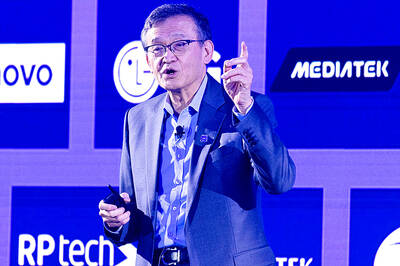As videocassettes fade into history, a full-fledged battle is on to establish the next standard of DVDs which could open up a new realm of possibilities in interactive home entertainment.
But shoppers hungry for the latest technology should be warned to hedge their bets: in a few years time a film released on DVD by Sony could fail to work in a next-generation DVD player on a computer of rival Toshiba.
Top electronics makers are divided between two formats of next-generation DVDs, expected for mass release in the middle of next year, which are not convertible with each other at present or in the foreseeable future.
The technology war is similar to the one that erupted in the late 1970s when home videocassette players hit the market. By the 1980s, customers who had gambled on Sony-developed Betamax had to switch to VHS which triumphed and became the standard.
DVDs, or digital versatile discs, are well on the way to globally conquering videocassettes less than a decade after hitting the market as consumers take to collecting them in the same way as music CDs. Last year, rentals of DVDs overtook videocassettes in the key US market.
One draw of DVDs is the ability to adjust features, such as choosing the language of a program, search through movies scene by scene, and access bundles of extras such as deleted scenes and commentaries from actors and directors.
The next-generation of DVDs promises even more.
Using blue lasers, which have a shorter wavelength than the red light used in current DVDs and CDs, allows the storage of up to six times as much data. The result will be DVD quality similar to high-definition television. The extra data space could also be used to develop more features, such as creating video games with the look and feel of cinema.
But the new technology could first be overshadowed by the competing formats, a point of concern for the industry.
"As a consumer, I don't want to worry about formats," Louis Burns, vice president of the world's largest chipmaker Intel, said at an October trade fair in Tokyo.
The duelling formats, whose names could become household words in a few years, are High Definition DVD (HD-DVD) and the Blu-ray Disc format. Sony has thrown its crucial weight behind Blu-ray, which it is expected to use for its next-generation PlayStation home video-game machine to be unveiled in the spring. Blu-ray is also backed by Dell and Matsushita, maker of the Panasonic brand. But HD-DVD enjoys the support of 13 companies including giants Toshiba and NEC.
Kazuya Ishii, sub-chief editor of the monthly consumer electronics magazine Nikkei Zero One, said Blu-ray appeared to be "one step ahead" due to its support from Sony and Matsushita and its bigger memory capacity.
But he advised against buying a next-generation disc drive at this point as it was far from clear which camp would be victorious.
Ishii said the final judgment could come not from consumer electronics makers but from Hollywood and from the computer industry as "the era of people seeing films through their PCs rather than TVs is coming."
Last month, Blu-ray seemed to get a boost when Twentieth Century Fox said it would participate on the board of directors for Blu-ray.
But Fox quickly said it was not choosing between the formats and was also a member of the HD-DVD Promotion Group. Michael O'Neill, technical special adviser to Fox, said both HD-DVD and Blu-ray "are strong candidates."
"Manufacturers are eagerly seeking their allies in major Hollywood studios because the quality and the quantity of content is the key to next-generation discs gaining popularity," said technology expert Akihisa Ishizuka of the MM Research Institute in Tokyo.
"Hollywood movie-makers' decision will have a great deal of impact," he said.
Still, even if the format war is resolved, next-generation DVDs could be prohibitively expensive. Price estimates for next-generation players go into the thousands of US dollars, making it a high-end product purchase much like the increasingly popular flatscreen TVs.
"Even if the commercialization comes next summer, it will not be an immediate big hit as it will be very expensive at the beginning," said Takashi Esaka, a clerk at a Tokyo electronics store.

The Eurovision Song Contest has seen a surge in punter interest at the bookmakers, becoming a major betting event, experts said ahead of last night’s giant glamfest in Basel. “Eurovision has quietly become one of the biggest betting events of the year,” said Tomi Huttunen, senior manager of the Online Computer Finland (OCS) betting and casino platform. Betting sites have long been used to gauge which way voters might be leaning ahead of the world’s biggest televised live music event. However, bookmakers highlight a huge increase in engagement in recent years — and this year in particular. “We’ve already passed 2023’s total activity and

Nvidia Corp CEO Jensen Huang (黃仁勳) today announced that his company has selected "Beitou Shilin" in Taipei for its new Taiwan office, called Nvidia Constellation, putting an end to months of speculation. Industry sources have said that the tech giant has been eyeing the Beitou Shilin Science Park as the site of its new overseas headquarters, and speculated that the new headquarters would be built on two plots of land designated as "T17" and "T18," which span 3.89 hectares in the park. "I think it's time for us to reveal one of the largest products we've ever built," Huang said near the

China yesterday announced anti-dumping duties as high as 74.9 percent on imports of polyoxymethylene (POM) copolymers, a type of engineering plastic, from Taiwan, the US, the EU and Japan. The Chinese Ministry of Commerce’s findings conclude a probe launched in May last year, shortly after the US sharply increased tariffs on Chinese electric vehicles, computer chips and other imports. POM copolymers can partially replace metals such as copper and zinc, and have various applications, including in auto parts, electronics and medical equipment, the Chinese ministry has said. In January, it said initial investigations had determined that dumping was taking place, and implemented preliminary

Intel Corp yesterday reinforced its determination to strengthen its partnerships with Taiwan’s ecosystem partners including original-electronic-manufacturing (OEM) companies such as Hon Hai Precision Industry Co (鴻海精密) and chipmaker United Microelectronics Corp (UMC, 聯電). “Tonight marks a new beginning. We renew our new partnership with Taiwan ecosystem,” Intel new chief executive officer Tan Lip-bu (陳立武) said at a dinner with representatives from the company’s local partners, celebrating the 40th anniversary of the US chip giant’s presence in Taiwan. Tan took the reins at Intel six weeks ago aiming to reform the chipmaker and revive its past glory. This is the first time Tan